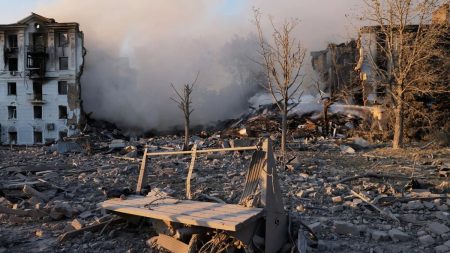The Julian Alps, a majestic mountain range straddling the border between Slovenia and Italy, witnessed a tragic turn of events last week as a blizzard claimed the life of a Hungarian hiker and left his companion stranded. The incident underscores the unpredictable nature of mountain weather and the inherent risks associated with high-altitude trekking, serving as a stark reminder of the importance of preparedness and caution when venturing into such environments.
The ordeal began on a Sunday when two Hungarian hikers, a man and a woman, found themselves caught in a sudden blizzard at an altitude of approximately 1,700 meters north of Ljubljana, the Slovenian capital. The deteriorating weather conditions, characterized by strong winds and heavy snowfall, rapidly transformed their hiking trip into a desperate struggle for survival. The challenging terrain, coupled with the blizzard’s ferocity, hampered their progress and ultimately led to their separation.
Slovenian mountain rescue teams immediately launched a search operation upon receiving reports of the missing hikers. However, the severe weather conditions, including persistent strong winds, initially prevented helicopters from accessing the area. This delay significantly hampered rescue efforts and prolonged the hikers’ exposure to the harsh elements, further jeopardizing their chances of survival.
On Monday, a breakthrough occurred when rescuers successfully located and rescued the female hiker. She had endured a harrowing night exposed to the elements, but fortunately, her condition allowed for immediate evacuation. However, the search for her male companion continued, hampered by the ongoing blizzard and the challenging mountainous terrain. Rescuers knew the man had suffered a broken leg, increasing the urgency of the search.
After days of relentless searching, the tragic news arrived. The body of the male hiker was discovered in a deep gorge, buried under more than two meters of snow. The Slovenian police helicopter, finally able to operate in the area, transported rescuers close to the suspected location. The rescuers then descended into the gorge using ropes, ultimately finding the hiker’s body approximately 250 meters below the point where the accident was believed to have occurred. The recovery operation was a testament to the rescuers’ dedication and bravery in the face of perilous conditions.
The blizzard that claimed the hiker’s life also wreaked havoc across the Balkan region. Tens of thousands of residents were left without electricity, forcing school closures and causing widespread traffic disruptions in Croatia, Bosnia, and Serbia. The widespread impact of the storm highlighted the vulnerability of infrastructure and daily life to extreme weather events. While Slovenia is renowned for its stunning Alpine scenery and attracts numerous hikers and mountaineers, this tragic incident serves as a somber reminder of the inherent dangers of mountain environments, especially during unpredictable weather conditions. It emphasizes the critical importance of thorough preparation, including checking weather forecasts, carrying appropriate gear, and informing others of intended routes, for anyone venturing into the mountains.














